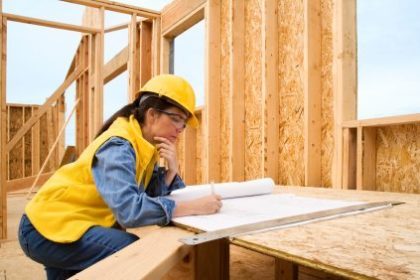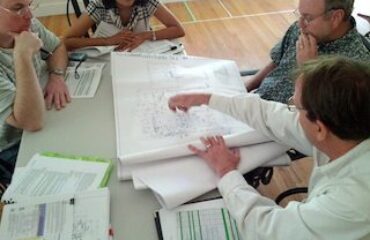Selecting a Sustainable Architect

An Insider’s Point of View
Being an architect myself and having worked as an architectural project manager until 2012, I have an insider’s view into the profession. In the 18 years of practicing architecture, I worked across many different sectors including residential, commercial and higher education, getting a really good feel for how different sectors operate.
Most firms practicing in the residential sector are quite small, ranging from 1 to 10 people. They usually calculate their fee based on the number of hours it will take to complete the work and the billing rate of the people involved. The principal’s (the owner of the firm) hourly rate is the highest and the person doing the actual drawing work has the lowest hourly billing rate.
Because they have higher overhead costs, larger firms will have higher hourly billing rates than small ones. In general, they offer more experience and expertise and can take on larger, more complex projects. If you are looking for an Architect with additional training in Green Building, you may search the directory from Built it Green or the list of community professional from theUSGBC.
Architecture is unique straddling both sides of the brain
A top notch architect is one who can excel at the legal labyrinth that is the building code, figure out how to build in a way that results in a durable, watertight structure, and at the same time, be able to dream up the most original, creative designs. This requires one to be extremely good in using the left brain as well as the right brain.
Needless to say, this is not humanly possible! In reality, architects are usually either left brained or right brained or somewhere in the middle. Based on their “mental inclinations,” they end up specializing in the work they do. Predominantly right-brained architects spend their time designing, while the left-brained ones figure out how to “build” these designs, e.g., “How shall we attach this?” “How do we make this waterproof?”
Thankfully, residential construction does not have the building code complexity of commercial construction, so even very right brained architects usually manage to meet the minimal requirements imposed by the building code on residences.
So, if your architect is very original and creative, do not expect him or her to figure out the best way to build the design. You will need to bring in a waterproofing consultant and other experts to ensure your building is watertight, energy efficient, healthy and comfortable.

HBS team-Alex Stadtner & Kunjan Shah; Wayne Neylan, General Contractor, Walter Chapman, Architect/Designer
The Need for Additional Consultants
You may get lucky and find someone who can design well AND give you a good set of construction drawings, but this is a rarity. In most cases, if you get a reasonably good design, the construction drawings will NOT incorporate construction best practices. If it is important to you to have a well-designed AND well-constructed home, the best thing to do is to bring an additional consultant on board during the design phase, while the drawings are still being developed.
Deciding on the details of construction after the contractor is on board, will make it a lot harder, take longer and cost more.
There are also many “architects” who will work with you to develop the home layout. Thereafter, they simply decorate the façade with trims and superficial embellishments as though it were a cake. No thought is given to design or construction best practices. Their drawings only include the bare minimum information required to obtain the permit from the building department. These firms are also amongst the cheapest ones around.
So decide what it important to you and then put together a team in the design phase so that your drawings incorporate all the necessary details. And I cannot stress enough how important it is NOT to leave constructability decisions until after construction has started!



